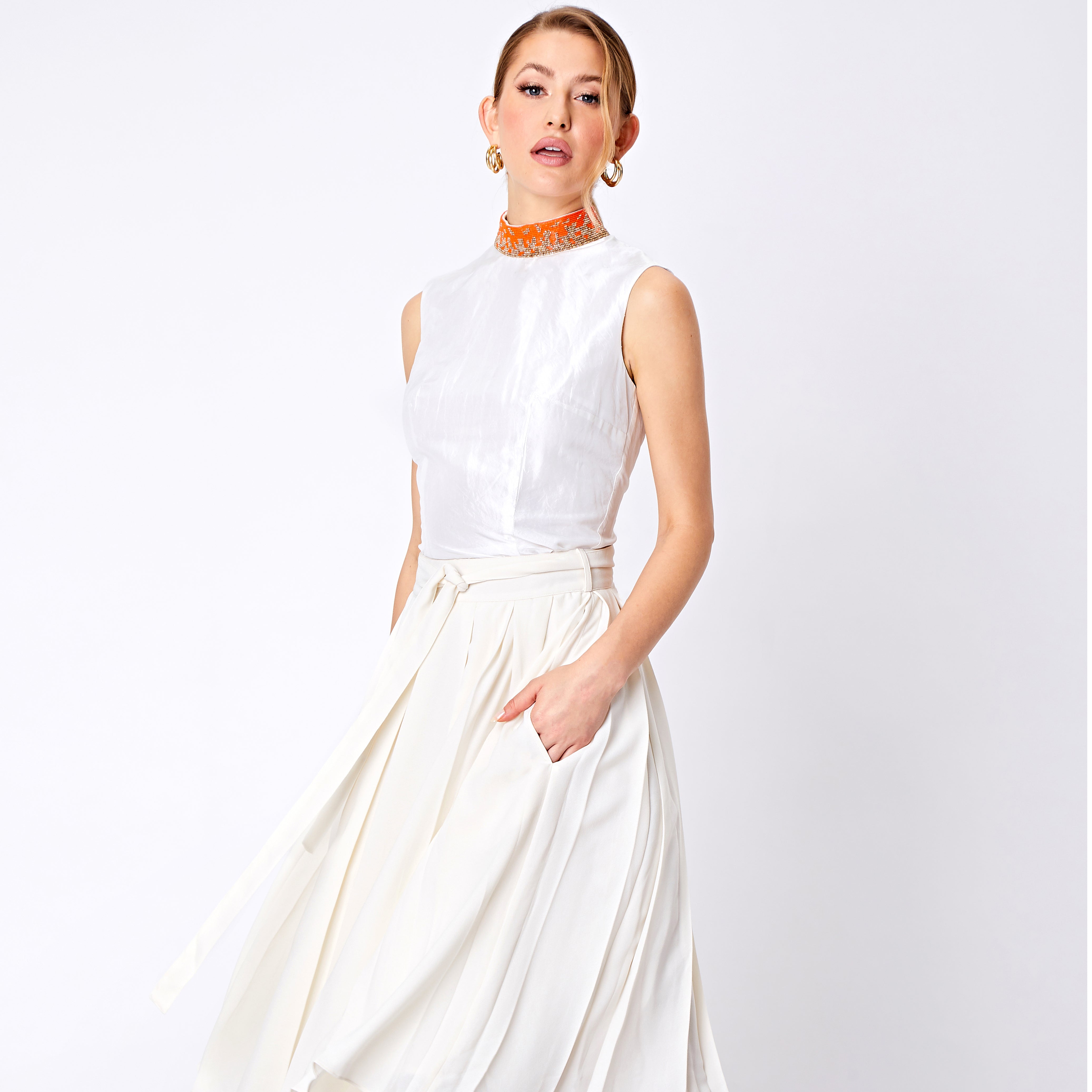1. Design

Looking at images, I sketch a range of pieces and then try to make full looks.
My main aims when designing are:
a. Mix & matching within the collection
b. Mix & matching with basic pieces in everyone's wardrobe
c. Take you from day to night
d. Easy to wear

I'll use the mannequin to experiment with silhouettes and draping. I'll sketch from these images and develop ideas.

I then take my sketches and add colour and finalise my looks. Each collection is made up of 10 looks and this SS20 collection is 15 individual garments.

Here is my initial beading and embroidery sample, I actually came up with this before anything else in the collection.
2. Pattern Cutting

Patterns on paper to get the correct fit

3. Sampling

This was taken at the lookbook photoshoot, using the samples
4. Production
Our production is done in New Delhi, India. We chose to have the collection made in India because when it comes to embellishment, the artisans in India are some of the best in the world. The quality and their attention to detail is hard to find anywhere else. Each bead needs to be placed one by one which takes a lot of patience and skill. Our fabric is made by the factory and all the production takes lace in-house so we know exactly where our garments are made, from beginning to end.
Ethical production is so important to us because we realise the amount of time and skill it takes to make each piece.
Ethical production means:
1. A fair wage
2. A safe working environment
3. No child labour or forced labour
4. No discrimination & gender equality
5. Transparency and accountability
It takes time and skill to make fabrics, cut them and then sew pattern pieces together so it is only right that the level of work is respected by ensuring that ethical production is paramount.

5. Online
Once each piece has been made and checked, it is signed by one of the artisans who worked on it. It takes a team to make each piece because of the many steps involved in production. Once production is completed, the garments are shipped to London and we sell directly to you. This means we aren't following the traditional retail route, making ethically handmade garments more affordable by removing the middle man.






Leave a comment